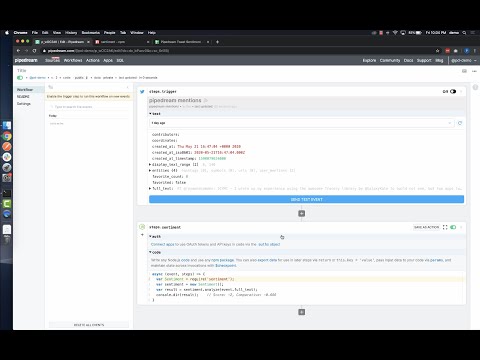What do you want to automate
with Google Sheets and Zoho Invoice?
Prompt, edit and deploy AI agents that connect to Google Sheets, Zoho Invoice and 3,000+ other apps in seconds.
Trusted by 1,000,000+ developers from startups to Fortune 500 companies
Popular Ways to Connect Google Sheets with Zoho Invoice#
Popular Google Sheets and Zoho Invoice Triggers#
Triggers when a new estimate is created. See the documentation
Triggers when a new invoice is created in Zoho Invoice. See the documentation
Emit new event each time a comment is added to a spreadsheet.
Emit new event each time a row or rows are added to the bottom of a spreadsheet.
Popular Google Sheets and Zoho Invoice Actions#
Add a single row of data to Google Sheets. See the documentation
Creates a new estimate in Zoho Invoice. See the documentation
Add multiple rows of data to a Google Sheet. See the documentation
Creates a new invoice in Zoho Invoice. See the documentation
Get all values or values from a range of cells using A1 notation. See the documentation
Overview of Google Sheets#
The Google Sheets API allows for the creation, reading, updating, and deletion of data within Google Sheets, enabling a robust platform for spreadsheet management and data manipulation. Through Pipedream, you can craft serverless workflows that respond to various triggers, such as webhook events, emails, or scheduled times, to interact with Google Sheets. This synergy can automate reporting, synchronize data across applications, manage inventory, track leads in a CRM, or even conduct survey analysis by updating and retrieving sheet data on the fly.
Connect Google Sheets#
import { axios } from "@pipedream/platform"
export default defineComponent({
props: {
google_sheets: {
type: "app",
app: "google_sheets",
}
},
async run({steps, $}) {
return await axios($, {
url: `https://www.googleapis.com/oauth2/v1/userinfo`,
headers: {
Authorization: `Bearer ${this.google_sheets.$auth.oauth_access_token}`,
},
})
},
})
Overview of Zoho Invoice#
The Zoho Invoice API offers a suite of tools to automate the invoicing and billing processes. With this API, you can create and manage customers, invoices, and payments. On Pipedream, you can harness these capabilities to build workflows that trigger on specific events, such as new invoice creation, or scheduled tasks that could, for example, follow up on unpaid invoices. Due to its serverless architecture, Pipedream ensures each step of your workflow runs only when needed, saving resources and time.
Connect Zoho Invoice#
import { axios } from "@pipedream/platform"
export default defineComponent({
props: {
zoho_invoice: {
type: "app",
app: "zoho_invoice",
}
},
async run({steps, $}) {
return await axios($, {
url: `${this.zoho_invoice.$auth.api_domain}/invoice/v3/users/me`,
headers: {
"Authorization": `Zoho-oauthtoken ${this.zoho_invoice.$auth.oauth_access_token}`,
"X-com-zoho-invoice-organizationid": `${this.zoho_invoice.$auth.organization_id}`,
},
})
},
})
Related Videos#



Community Posts#


